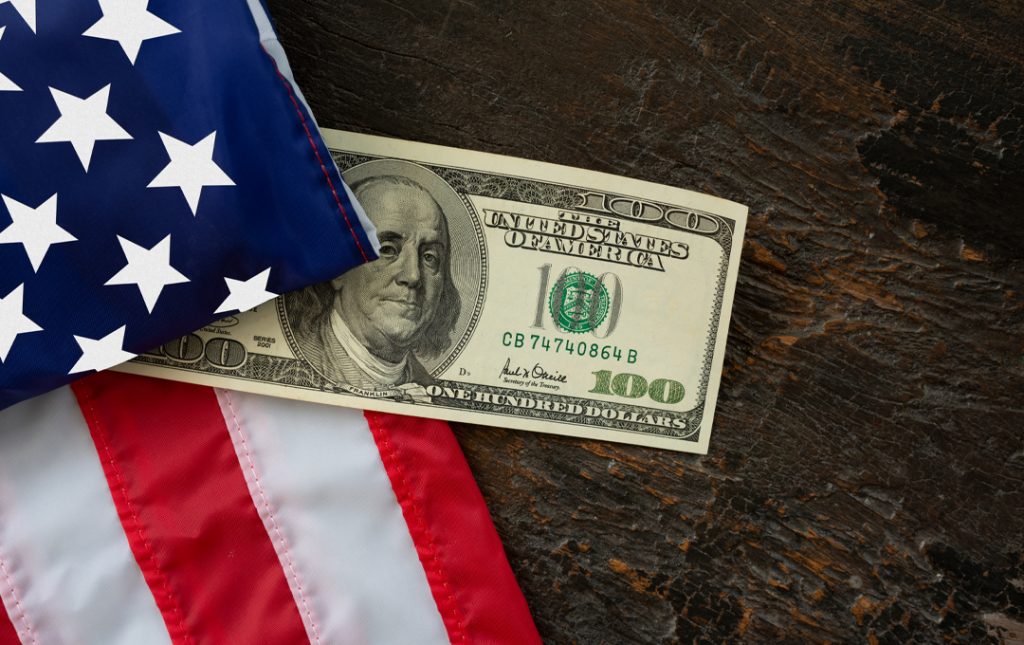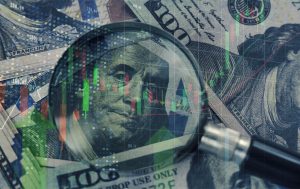Introduction
The financial markets saw significant movements on Thursday as the dollar gained strength following the European Central Bank’s (ECB) decision to hold rates steady. This decision has kept alive the expectations of a potential rate cut in September, influencing various sectors and currencies globally. In the midst of these developments, U.S. economic data presented a mixed bag, adding layers of complexity to the market dynamics.
Dollar’s Resurgence
The dollar managed to recover some of its recent losses, rising on Thursday. This rebound was partly driven by the ECB’s decision to maintain its current rate levels, which reinforced market expectations of a rate cut in September. Despite an unexpectedly large jump in U.S. initial jobless claims, the dollar’s strength was bolstered by a surprisingly large rise in the Philly Fed business index. This index showed rebounding new orders and employment, while the prices paid gauge eased slightly, indicating some positive underlying economic momentum.
ECB’s Stance and Market Reaction
The ECB’s statement confirmed that incoming information broadly supports the governing council’s previous assessment of the medium-term inflation outlook. ECB President Christine Lagarde emphasized that the decision in September remains “wide open,” suggesting that policymakers are keeping their options flexible based on upcoming economic data.
This stance by the ECB has had a noticeable impact on the financial markets. U.S. Treasury yields rose by 3-4 basis points, with the 2s-10s curve remaining inverted at -27 basis points. This inversion highlights ongoing concerns about the economic outlook and potential recession risks.
Equity Market and Commodity Movements
The S&P 500 experienced a decline of 0.85% in afternoon trading in New York. After a brief rebound in chip and megacap stocks fizzled out, investors rotated out of high-priced technology stocks and into underperforming sectors. This shift reflects a broader market strategy of seeking stability amidst economic uncertainty.
In the commodities market, WTI crude oil prices fell by 0.17%, erasing earlier gains. Copper prices also dropped significantly by 3.28%, primarily due to a lack of new stimulus measures from a key political meeting in China. These movements indicate a cautious sentiment among investors regarding the global economic outlook.
Forex Market Dynamics
The USD/JPY pair saw a modest bounce in what has been a subdued session, with price action remaining jittery. The pair experienced a short-lived drop to 155.38 overnight but managed to rebound back above 156. Despite this recovery, USD/JPY is holding below its 55-day moving average (157.66), keeping the door open for a potential test of key support at 155-155.10 (100DMA). Increased market volatility, reflected by the VIX reaching its highest level since May, suggests that risks are tilted to the downside.
EUR/USD Analysis
EUR/USD traded lower on Thursday following the ECB’s decision to leave rates unchanged. However, dips in the currency pair might present buying opportunities for bulls, especially as expectations for the Fed’s policy path could dominate euro area considerations. ECB President Lagarde highlighted growth risks and mentioned that the Harmonized Index of Consumer Prices (HICP) should fall to target in the second half of 2025. She also noted that the rate path is not predetermined, with September remaining a crucial decision point.
Market Expectations and Outlook
Investors are interpreting the ECB’s flexible stance as an indication that a rate cut is likely in September, with another potential cut in December. German yields fell while the dollar’s yield advantage widened, with German-U.S. spreads hitting their widest since July 11.
U.S. short-term rates markets are currently pricing in a greater than 85% probability that the Fed will cut rates by a total of 75 basis points in 2024, a much more aggressive approach than what FOMC policymakers have projected. Should the Fed hint at a less restrictive stance in its July meeting, it could lead to a sharp decline in yields and the dollar, thereby tightening spreads.
As it stands, the market expects the Fed to be more aggressive with its rate cut cycle compared to the ECB. This scenario should keep risks tilted to the upside for EUR/USD, offering potential trading opportunities for investors.
Conclusion
The interplay between central bank policies, economic data, and market sentiment continues to shape the financial landscape. With the dollar gaining strength amidst mixed signals from the U.S. economy and cautious moves from the ECB, investors need to stay vigilant and adapt their strategies accordingly. As we approach critical decision points for both the Fed and the ECB, the markets are likely to remain volatile, presenting both risks and opportunities for traders.




